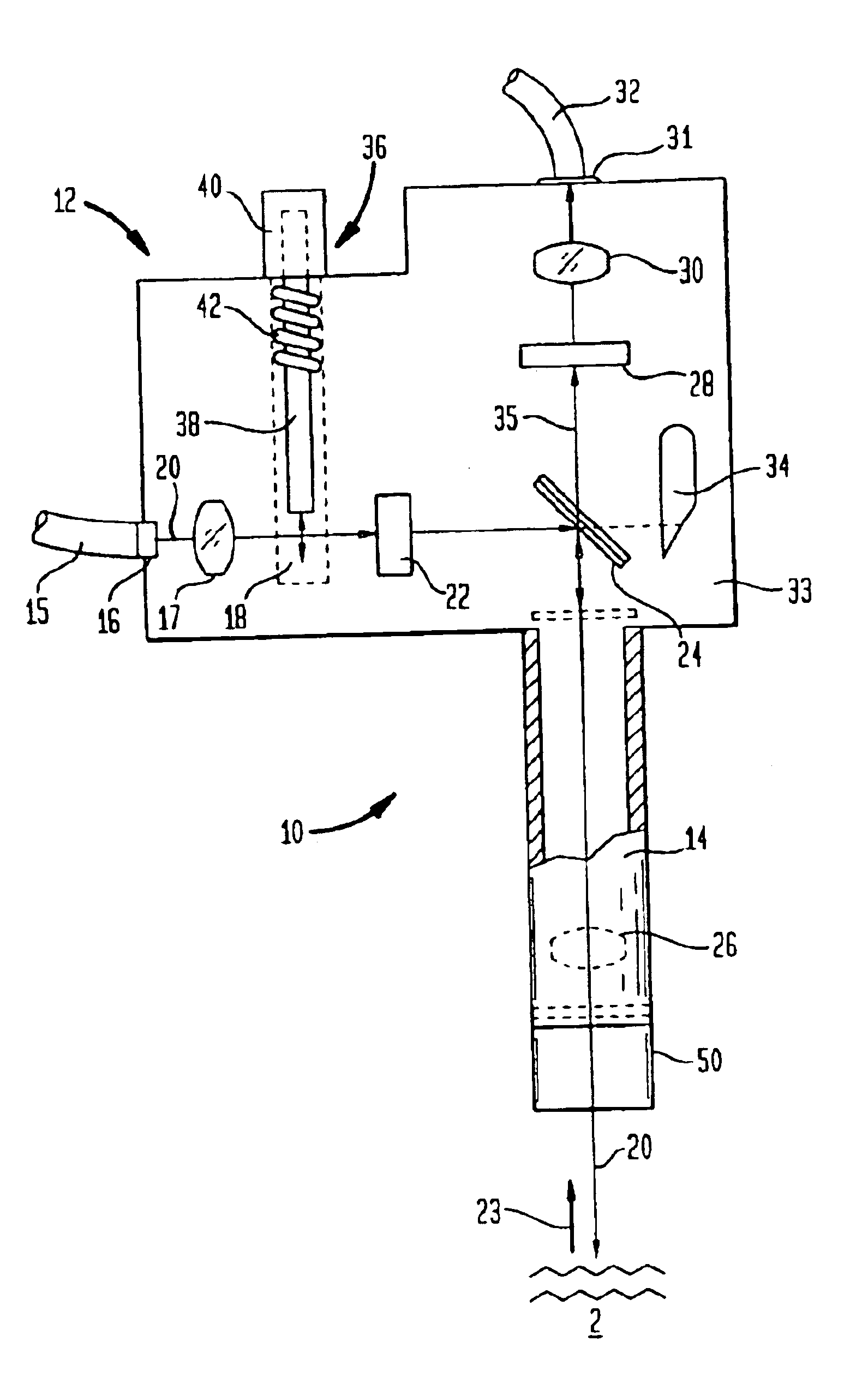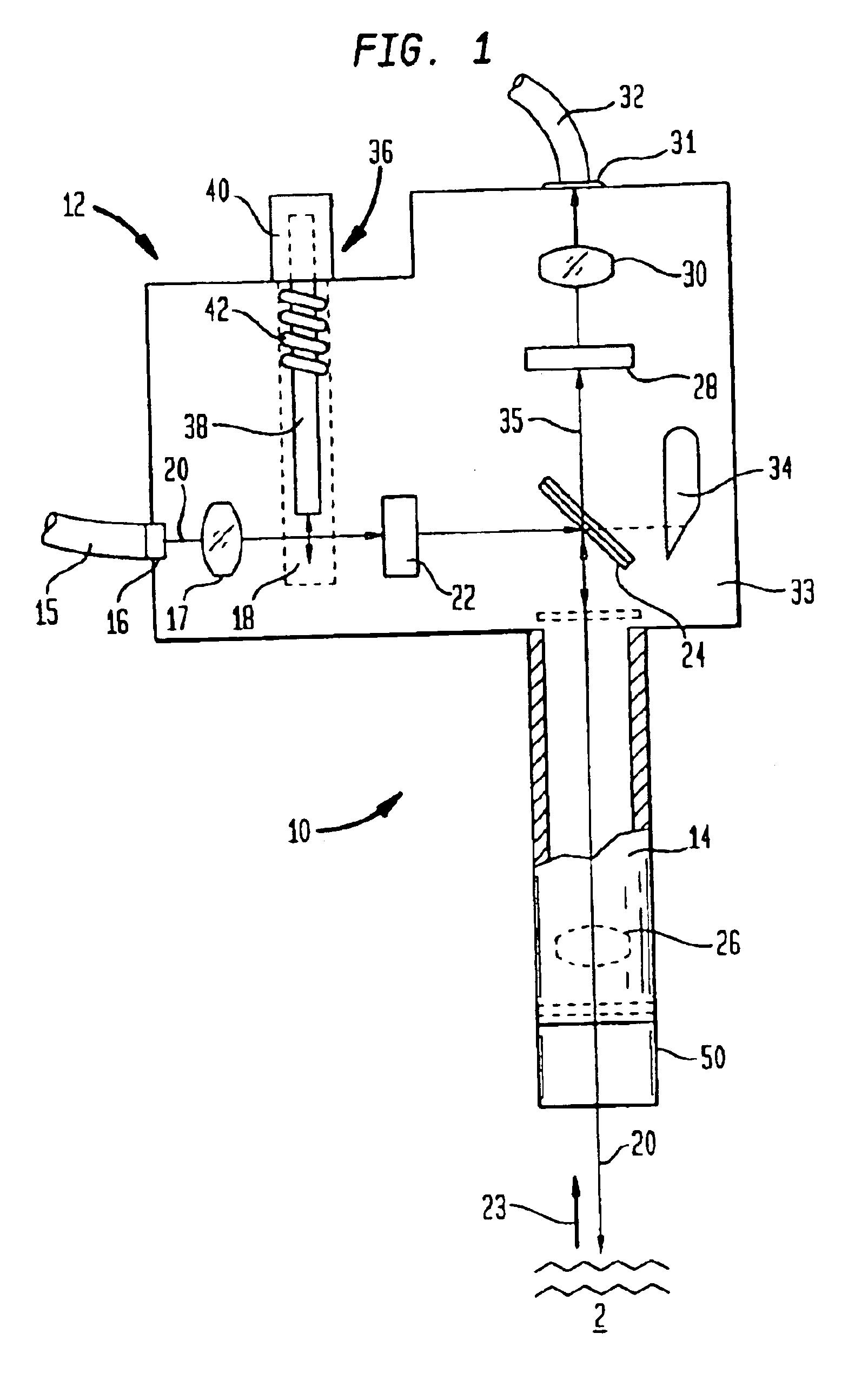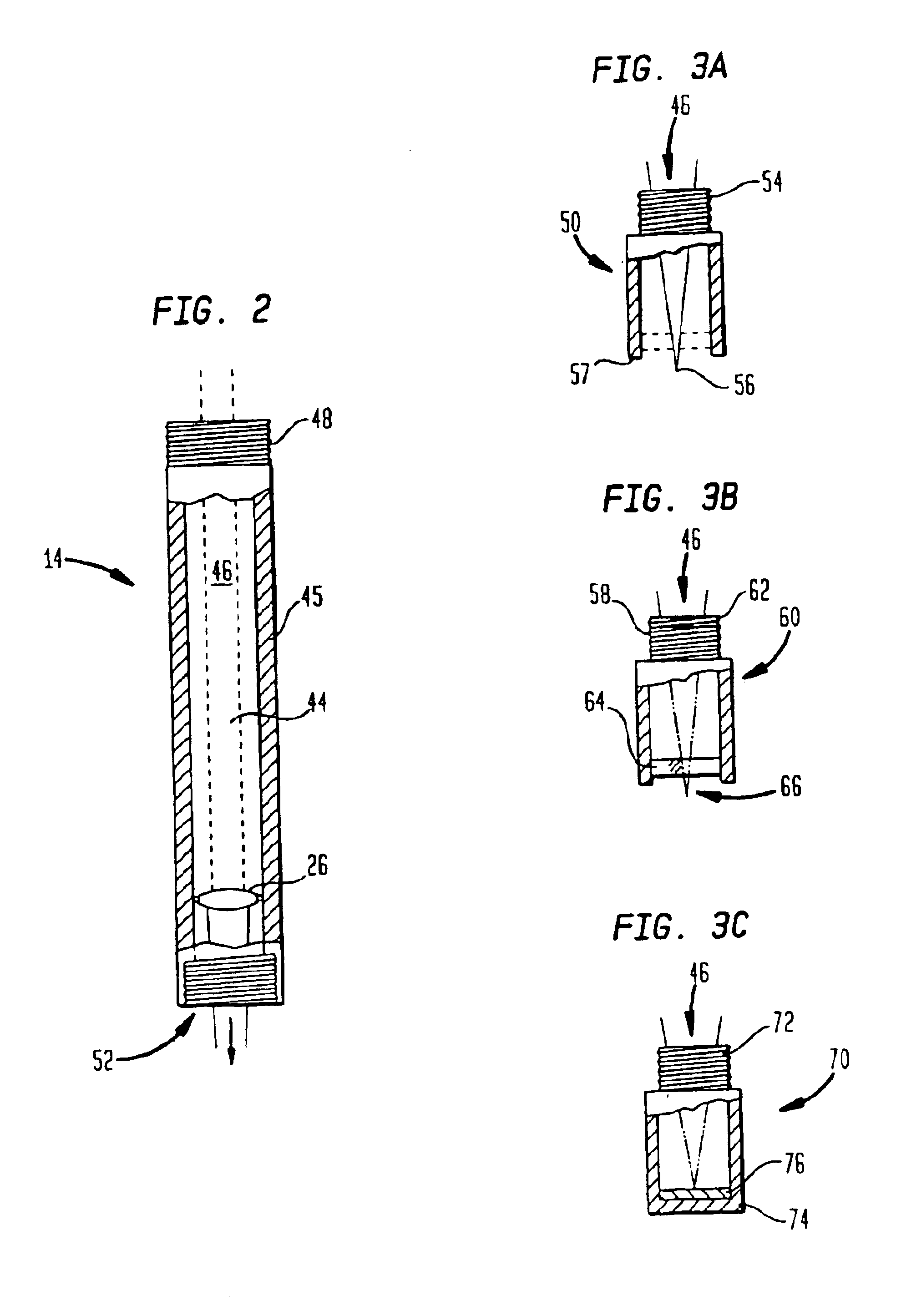Probe assemblies for Raman spectroscopy
a raman spectroscopy and probe technology, applied in the field oframan spectroscopy, can solve the problems of inability to exhibit simple ir spectrum, inability to easily adapt to fiber optic data transmission, and inability to easily manufacture raman spectroscopy, and achieve the effect of convenient use with portable devices and easy manufacturing
- Summary
- Abstract
- Description
- Claims
- Application Information
AI Technical Summary
Benefits of technology
Problems solved by technology
Method used
Image
Examples
Embodiment Construction
[0031]FIG. 1 is a schematic diagram of a probe 10 including an optical head assembly 12 and a sampling tube 14. Excitation radiation, e.g., from a portable or handheld Raman spectroscopy system, enters the head assembly 12 via input fiber 15. The input fiber can be coupled to the head assembly 12 via a coupler 16. The beam from the input fiber is passed through lens 17, which serves to collimate or other project the incoming radiation through the optical head assembly along beam path 20 with minimal dispersion. The radiation from the lens 17 then passes through chamber 18 of the safety switch 36. The incoming beam then passes through one or more optional filters 22, e.g., a low-pass filter.
[0032]The filtered incoming light is then reflected by dichroic beam-splitter 24 (which is designed to reflect nearly all of the excitation light) and directed into the sampling tube 14. Within sampling tube 14, a second lens 26 can be disposed to focus the excitation radiation to a particular poi...
PUM
| Property | Measurement | Unit |
|---|---|---|
| wavelength | aaaaa | aaaaa |
| wavelength | aaaaa | aaaaa |
| wavelength | aaaaa | aaaaa |
Abstract
Description
Claims
Application Information
 Login to View More
Login to View More - R&D
- Intellectual Property
- Life Sciences
- Materials
- Tech Scout
- Unparalleled Data Quality
- Higher Quality Content
- 60% Fewer Hallucinations
Browse by: Latest US Patents, China's latest patents, Technical Efficacy Thesaurus, Application Domain, Technology Topic, Popular Technical Reports.
© 2025 PatSnap. All rights reserved.Legal|Privacy policy|Modern Slavery Act Transparency Statement|Sitemap|About US| Contact US: help@patsnap.com



